There are several United States commemorative coins, medals and medallions that celebrate the lives and accomplishments of Black activists, athletes, educators, entertainers, inventors, leaders and patriots as well as seminal events and institutions in Black History. These coins, medals and medallions are a part of the Museum Of UnCut Funk Collection and are currently traveling to museums and cultural centers across the country as a part of our For The Love Of Money: Black Icons On U.S. Currency exhibition.
Commemorative Medals
A Congressional Gold Medal is an award bestowed by the United States Congress through legislation, or Public Law, that is signed by the President of the United States. Congressional Gold Medals are produced by the United States Mint. The Congressional Gold Medal and the Presidential Medal of Freedom are the two highest civilian awards that can be bestowed by the United States government.
The Congressional Gold Medal is awarded to persons “who have performed an achievement that has an impact on American history and culture that is likely to be recognized as a major achievement in the recipient’s field long after the achievement.” American citizenship is not a requirement.
All Congressional Gold Medal legislation must be cosponsored by at least two-thirds of the Members of the House and at least 67 Senators.
Congressional Gold Medals are designed by the United States Mint to specifically commemorate the person and achievement for which the medal is awarded. Medals are therefore different in appearance, and there is no standard design.
Congress authorizes the United States Mint to produce bronze replicas of Congressional Gold Medals for purchase by the public. The dates below reflect when the bronze medal replicas were introduced.
Twenty Black history icons and seminal events and institutions have been awarded a Congressional Gold Medal and memorialized on commemorative bronze medal replicas.
Two replica commemorative bronze medals featuring a Black President have been produced to date.
One commemorative silver medal featuring Lady Liberty as a Black woman, in celebration of the 225th Anniversary of the United States Mint has also been produced.
Notes:
- Medals and medallions are presented in chronological order based on when they were first introduced to the public.
- “Obverse” refers to the front of a coin, medal or medallion and “reverse” refers to the back.
1978 – Marian Anderson Bronze Medal
Commemorates her highly distinguished and impressive career of more than half a century; for untiring and unselfish devotion to the promotion of the arts throughout the world, including establishment of scholarships for young people, for her strong and imaginative support to humanitarian causes; for contributions to the cause of world peace through her work as United States delegate to the United Nations; for her performances and recordings which have reached people throughout the world; for her unstinting efforts on behalf of the brotherhood of man and for the many treasured moments she has brought to the world with enormous demand on her time, talent, and energy.
Marian Anderson was the first Black person and Black woman to be awarded a Congressional Gold Medal in 1978, and the first to be featured on a United States Commemorative Bronze Medal.
Anderson was a renowned contralto who was the first Black person invited to perform at the White House. In 1939, she became the first Black person to sing on the steps of the Lincoln Memorial. This performance was facilitated by President Roosevelt, First Lady Eleanor Roosevelt and the NAACP because the Daughters Of The American Revolution denied her an opportunity to sing at Constitution Hall because she was a Black woman. In 1955, she was the first Black person to perform at the Metropolitan Opera in New York City.
The obverse design features a portrait of Marian Anderson. The inscription reads: “MARIAN ANDERSON.”
The reverse design features a world held in two cupped hands. The inscriptions read: “HE’S GOT THE WHOLE WORLD IN HIS HANDS,” “UNITY GOD’S WAY” and “HONORED BY CONGRESS FOR PUBLIC SERVICE THROUGH MUSIC 1977.”
1982 – Joe Louis Bronze Medal
Commemorates his accomplishments “which did so much to bolster the spirit of the American people during one of the most crucial times in American history and which have endured throughout the years as a symbol of strength for the Nation.”
Joe Louis, aka the “Brown Bomber” was the first Black man and Black athlete featured on a United States Commemorative Bronze Medal.
Joe Louis, the “Brown Bomber”, was the second Black world heavyweight boxing champion from 1937 to 1949. His 1938 defeat of the German boxer Max Schmeling not only avenged his only loss to that point, but delivered a stinging defeat of Hitler’s myth of Aryan supremacy.
The obverse design features a depiction of Joe Louis in a boxing stance. The inscription reads: “JOE LOUIS 1914-1981.”
The reverse design features the heavyweight belt Louis won in 1937 with an American Eagle on the center buckle and a pair of boxing gloves. The inscriptions read: “WORLD HEAVYWEIGHT BOXING CHAMPION,” “ACT OF CONGRESS 1981” and “1937-1948.”
1984 – Roy Wilkins Bronze Medal
Commemorates his “incomparable contribution to the struggle for civil rights and equality for all Americans”.
Roy Wilkins was first Black civil rights leader awarded a Congressional Gold Medal.
Roy Wilkins was the Executive Director of the NAACP from 1964 to 1977, and under his leadership the organization spearheaded the effort that led to the Brown v. Board of Education, 1964 Civil Rights Act and the 1965 Voting Rights Act legislation.
The obverse design features a portrait of Roy Wilkins. The inscriptions read: “ROY WILKINS,” “1901,” “1981” – the years of his birth and death.
The reverse design features the goddess justice with the inscriptions: “LIBERTY AND JUSTICE FOR ALL,” “1984” and “MEDAL OF CONGRESS.”
1988 – Jesse Owens Bronze Medal
Commemorates his “athletic achievements and humanitarian contributions to public service, civil rights and international goodwill”.
Jesse Owens was the first American track & field athlete to win four gold medals in a single Olympiad, at the 1936 Berlin Olympics, and in doing so crushed Hitler’s myth of Aryan supremacy. Owens broke the Olympic long jump record and his team broke the Olympic 4 x 100 meter relay record.
The obverse design features a portrait of Jesse Owens. The inscriptions read: “JESSE OWENS,” “1913,” “1980,” – the years of his birth and death, and “OLYMPIC CHAMPION”.
The reverse design features Owens as an Olympic sprinter. The inscriptions read: “ATHLETE,” “HUMANITARIAN,” “ACT OF CONGRESS 1988” and “DETERMINATION, DEDICATION, DISCIPLINE, ATTITUDE.”
1991 – General Colin Powell Bronze Medal
Commemorates his “exemplary performance as a military leader and advisor to the President in planning and coordinating the military response of the United States to the Iraqi invasion of Kuwait and the ultimate retreat of Iraqi forces and Iraqi acceptance of all United Nations Resolutions relating to Kuwait.
Colin Powell is a four star general who was the first Black person to serve as Secretary Of State, under President George W. Bush. He was also the only Black person to serve as Chairman Of The Joint Chiefs Of Staff, under President George H.W. Bush.
Powell is the only Black man to be awarded all three prestigious civilian medals – Congressional Gold Medal, Presidential Medal Of Freedom, Presidential Citizens Medal; the only Black person to receive the Presidential Medal Of Freedom twice; the first Black and to receive the Presidential Citizens Medal.
The obverse design features a portrait of General Powell. The inscriptions read: “GENERAL COLIN L. POWELL” and “CHAIRMAN, JOINT CHIEFS OF STAFF.”
The reverse design features General Powell congratulating a United States soldier and the Joint Chiefs of Staff flag. The inscriptions read: “PRESENTED TO HONOR HIS LEADERSHIP, INTEGRITY, AND PROFESSIONALISM THROUGHOUT OPERATION DESSERT SHIELD AND OPERATION DESERT STORM” and “ACT OF CONGRESS 1991.”
1998 – Nelson Mandela Bronze Medal
Commemorates his “life-long dedication to the abolition of apartheid and the promotion of reconciliation among the people of the Republic of South Africa.”
Nelson Mandela was the first Black South African to receive a Congressional Gold Medal.
Nelson Rolihlahla Mandela became the first democratically elected and first Black President of South Africa, serving one term from 1994 through 1999. His election ended white minority rule and the oppressive system of apartheid.
The obverse design features a portrait of Nelson Rolihlahla Mandela. The inscriptions read: “PRESIDENT NELSON ROLIHLAHLA MANDELA” and ”SOUTH AFRICA.”
The reverse design features compass points and a decorative spindle, children linked together and overlapping branches. The inscriptions read: “PRESIDENT MANDELA DEDICATED HIS LIFE TO THE VICTORY OF DEMOCRACY OVER APARTHEID” and “BY ACT OF CONGRESS 1998.”
1999 – Rosa Parks Bronze Medal
Commemorates her “contributions to the Nation” as the “first lady of civil rights” and “mother of the freedom movement,” and whose “quiet dignity ignited the most significant social movement in the history of the United States.”
Rosa Parks was a civil rights icon whose refusal to give up her seat to a white person and move to the back of the bus fueled the Montgomery Bus Boycott, the fight against Jim Crow segregation and the national Civil Rights Movement. Parks was a life long activist who fought for justice and against racism and discrimination.
The obverse design features a portrait of Rosa Parks. The inscriptions read: “ROSA PARKS” and “MOTHER OF THE MODERN DAY CIVIL RIGHTS MOVEMENT.”
The reverse design features a swag of oak leaves, scales of justice, and the world. The inscriptions read: “QUIET STRENGTH,” “PRIDE, DIGNITY, COURAGE” and “BY ACT OF CONGRESS 1999.”
1999 – Little Rock Nine Bronze Medal
Commemorates their selfless heroism of during the desegregation of Little Rock Central High School. These nine students risked their lives to integrate Central High School in Little Rock, Arkansas, and subsequently the nation.
As the first Black students to attend Little Central High School, they stood up to intimidation from the Arkansas Governor and the Arkansas National Guard, and violence from racist protesters and fellow students.
The obverse design features the nine students being escorted up the steps of Little Rock Central High School by United States soldiers. The inscription reads: “THE LITTLE ROCK NINE 1957.”
The reverse design features the inscriptions: “COURAGE BRAVERY JUSTICE OPPORTUNITY,” “ERNEST GREEN,” ”JEFFERSON THOMAS,” “MELBA PATTILLO BEALS,” “CARLOTTA WALLS LANIER,” “MINNIJEAN BROWN TRICKEY,” “THELMA MOTHERSHED WAIR,” “GLORIA RAY KARLMARK,” “ELIZABETH ECKFORD,” “TERRENCE ROBERTS” and “ACT OF CONGRESS 1998.”
2004 – Dr. Dorothy Height Bronze Medal
Commemorates her contribution “as one of the preeminent social and civil rights activists of her time, particularly in the struggle for equality, social justice, and human rights for all people”.
The National Council Of Negro Women (NCNW) national headquarters building is named after Dorothy I. Height. The NCNW, founded by Mary McLeod Bethune, was led by Height as President for 40 years. In this capacity, Height became one of the most important civil rights leaders in the country. As the only female member of the Council For United Civil Rights Leadership she worked along side the “Big Six” and was one of the organizers of the March On Washington. As a woman, however, she experienced discrimination and was never given the credit she deserved.
Height is the only Black woman to be awarded all three prestigious civilian medals – Congressional Gold Medal, Presidential Medal Of Freedom, Presidential Citizens Medal.
The obverse design features a portrait of Dorothy Height. The inscriptions read: “DOROTHY I. HEIGHT” and “ACT OF CONGRESS 2003.”
The reverse design features the National Council of Negro Women’s building in Washington, D.C. and the United States Capitol. The inscriptions, which reflect Height’s quotes, read: “We African American Women seldom do just what we want to do, but always what we have to do,” ” I am grateful to have been in a time and place where I could be a part of what was needed” and “Dorothy I. Height.”
2004 – Brown v. the Board of Education Medal
Commemorates their contribution as pioneers in the effort to desegregate public schools.
The obverse design features Reverend DeLaine, Harry Briggs, Eliza Briggs and Levi Pearson portraits and two cabbage palmettos, the state tree of South Carolina. The inscriptions read: “BRIGGS V. ELLIOT,” “Our Trust Is In God,” “Joseph A. DeLaine,” “Harry & Eliza Briggs,” “Levi Pearson” and “BROWN V. BOARD OF EDUCATION.”
The reverse design features the goddess of justice. The inscriptions read: “Honoring the Pioneers and Petitioners from Clarendon County, South Carolina,” “They proved that segregation in education can never produce equality and that it is evil that must be eradicated,” “Judge J. Waties Waring Dissenting Opinion” and “ACT OF CONGRESS 2003.”
2005 – Jackie Robinson Bronze Medal
Commemorates his “legacy and personal achievements”, “advancement of civil rights in the United States” and “many contributions to the nation”.
Jackie Robinson broke the color barrier in Major League Baseball, and in 1962 was inducted into the Major League Baseball Hall of Fame.
The obverse design features a portrait of Jackie Robinson. The inscriptions read: “JACKIE ROBINSON,” “A LIFETIME OF ADVOCACY FOR SOCIAL JUSTICE & HUMAN DIGNITY” and “ACT OF CONGRESS 2003.”
The reverse design reflects a Jackie Robinson quote: “A LIFE IS NOT IMPORTANT EXCEPT IN THE IMPACT IT HAS ON OTHER LIVES” and “JACKIE ROBINSON”
2007 – Tuskegee Airmen Bronze Medal
Commemorates their unique military record, which inspired revolutionary reform in the Armed Forces.
The Tuskegee Airmen were the first Black aviators to serve in the Armed Forces and the first Black flying squadron to deploy overseas during World War II. They formed the 332nd Fighter Group and 477th Bombardment Group, which were segregated units of the U.S. Army Air Corps. Tuskegee fighter pilots were known for the red tails painted on their planes. The “Tuskegee Experience” also included over 10,000 military and civilian men and women who served as support personnel.
The obverse design features three Tuskegee Airmen, an officer, mechanic and pilot, designated by their headgear and an Eagle flying with wings outstretched, symbolizing flight, nobility and the highest ideals of the Nation. The inscriptions read: “TUSKEGEE AIRMEN,” “1941” and “1949.”
The reverse design features three types of aircraft the Tuskegee Airmen flew in World War II: P-40, P-51, B-25. The inscriptions read: “ACT OF CONGRESS,” “2006,” and “OUTSTANDING COMBAT RECORD INSPIRED REVOLUTIONARY REFORM IN THE ARMED FORCES.”
2008 – Senator Edward Brooke III Bronze Medal
Commemorates his unprecedented and enduring service to our nation.
Brooke was the first Black Senator elected by popular vote. He served as a Republican Senator with distinction for two terms, in 1966 and 1972. He was also the first Black politician from Massachusetts to serve in Congress.
Brooke was the first Black person to be nominated for statewide office in Massachusetts in 1960. He was the first Black person elected Attorney General in any state in 1962.
The obverse design features Edward Brooke portrait. The inscription reads: “EDWARD WILLIAM BROOKE.”
The reverse design features the United States Capitol Building and Massachusetts State House between two olive branches. The inscriptions read: “ACT OF CONGRESS 2008,” “AMERICA’S GREATNESS LIES IN ITS WONDROUS DIVERSITY,” ”OUR MAGNIFICENT PLURALISM HAS MADE THIS COUNTRY GREAT,” ”OUR EVER-WIDENING DIVERSITY WILL KEEP US GREAT” and “MASSACHUSETTS STATE HOUSE.”
2011 – Montford Point Marines Bronze Medal
Commemorates their personal sacrifice and service to their country during World War II as the first Black Marines. The United States Marine Corps was integrated in 1949. Montford Point Marines went on to serve in the Korean and Vietnam Wars.
The obverse design features Montford Point Marines in an action scene from training. The inscriptions read: “MONTFORD POINT MARINES,” “1942” and “1949.”
The reverse design features Montford Point Marines in formation during training and their signature water tower. The inscriptions read: “FOR OUTSTANDING PERSEVERANCE and COURAGE that INSPIRED SOCIAL CHANGE in the MARINE CORPS,” “2011” and “ACT OF CONGRESS.”
2013 – 16th Street Baptist Church Bombing Victims Bronze Medal
Commemorates the powerful symbol for the movement for civil and human rights their deaths became and their ultimate sacrifice which was emblematic of many others who lost their lives for the causes of freedom and equality.
The 16th Street Baptist Church bombing brought national attention to the racism and violence suffered by Black people in Birmingham and the South and served as a catalyst for the Civil Rights Movement. In 2006, the 16th Street Baptist Church was designated as a National Historic Landmark.
The obverse design features silhouettes of the four little girls. The inscriptions read: “ADDIE MAE COLLINS,” “DENISE MCNAIR,” “CAROLE ROBERTSON,” “CYNTHIA WESLEY,” “PIVOTAL IN THE STRUGGLE FOR EQUALITY” and “SEPTEMBER 13 1963.″
The reverse design features a view of the 16th Street Baptist Church. The inscriptions read: “ACT OF CONGRESS 2013,″ “KILLED IN THE BOMBING OF THE 16TH ST. BAPTIST CHURCH” and “BIRMINGHAM, ALABAMA.”
2013 – Martin Luther King, Jr. / Coretta Scott King Bronze Medal
Dr. Martin Luther King Jr. and Coretta Scott King were originally awarded the Congressional Gold Medal in 2004 in honor of their contributions to the Nation on behalf of the civil rights movement and to recognize:
- The Reverend Dr. Martin Luther King, Jr. and his widow Coretta Scott King as the first family of the Civil Rights Movement, who had distinguished records of public service to the American people and the international community
- Dr. King’s doctrine of nonviolent civil disobedience to combat segregation, discrimination and racial injustice
- Dr King’s August 28, 1963, march on Washington that featured his most famous address, the “I have a dream” speech
- Dr. King’s assassination for his beliefs on April 4, 1968, in Memphis, Tennessee
- Mrs. King’s entrance into the Civil Rights Movement in 1955 during the Montgomery bus boycott and the important role she played as a leader of the American Civil Rights Movement
- Mrs. King’s devotion to developing and building the Atlanta-based Martin Luther King, Jr. Center for Nonviolent Social Change after Dr. King’s assassination
- Mrs. King’s role in the campaign to establish Dr. King’s birthday as a national holiday
The obverse design features portraits of Dr. King and Coretta Scott King. The inscriptions read: “DR. MARTIN LUTHER KING, JR. AND CORETTA SCOTT KING,” “ACT OF CONGRESS 2004″ and “FOR THEIR SERVICE TO HUMANITY.”
The reverse design features the inscription “MARTIN LUTHER KING, JR. CENTER FOR NONVIOLENT SOCIAL CHANGE” and an images of the center. The second inscription reflects a Martin Luther King Jr. Quote: “I suggest that the philosophy and strategy of nonviolence become immediately a subject for study for serious experimentation in every field of human conflict, by no means excluding the relations between nations. This may well be mankind’s last chance to choose between chaos and community.”
2014 – American Fighter Aces Bronze Medal
Commemorates their heroic military service and defense of our country’s freedom throughout the history of aviation warfare.
This medal honors Lee Andrew Archer, Jr., the first and only Black American Fighter Ace. Archer was a fighter pilot for the Tuskegee Airmen in the 302nd Fighter Squadron of the 332nd Fighter Group during World War II. He also fought in the Korean War. Archer flew 196 missions and shot down four enemy aircraft and with another pilot shot down a fifth enemy plane. He retired as a Lieutenant Colonel.
Archer was also awarded a Congressional Gold Medal as a Tuskegee Airmen in 2007 by President Bush. Archer was invited along with all surviving Tuskegee Airmen to President Barack Obama’s inauguration in 2009.
The obverse design features four pilots, representing World War I, World War II, the Korean War and Vietnam War, an ace of spades, military wings with a globe centered, symbolizing the global impact of the group’s service. The inscriptions read: “AMERICAN FIGHTER ACES,” “ARMY,” “NAVY,” “AIR FORCE” and “MARINES.”
The reverse design features four aircraft used by American Fighter Aces, five stars representing the minimum number of aerial combat victories required for qualification. The inscriptions read: “DUTY COURAGE AGGRESSIVENESS,” “2014,” and “ACT OF CONGRESS.”
2014 – Civil Air Patrol Bronze Medal
Commemorates the extraordinary service of the Civil Air Patrol (CAP) during World War II.
This medal honors Willa Brown, the first Black officer in the Civil Air Patrol, receiving the rank of Lieutenant in 1942. Brown was the first Black woman to earn a private pilot’s license and to hold a commercial pilot’s license in the United States. She was also the first woman to hold both a pilot’s and mechanic’s license. She and her husband opened the Coffey School of Aeronautics at Chicago’s Harlem Airport, the first Black owned and operated flight school. Brown co-founded the National Airmen’s Association of America in 1939, working to get Black aviation cadets into the U.S. military.
The obverse design features two CAP volunteers – one male and one female – watching the skies. In the background, a tanker is escorted by CAP planes overhead. The inscriptions read: “CIVIL AIR PATROL,” “1941-1945”.
The reverse design features a partial laurel wreath, representing honor and service, surrounding CAP insignia’s. The inscriptions read: “HONOR,” “CIVILIAN VOLUNTEERS WHO FLEW ARMED & HUMANITARIAN MISSIONS” and “ACT OF CONGRESS 2014.”
2015 – Selma To Montgomery Marches Bronze Medal
Commemorates the Foot Soldiers who participated in Bloody Sunday, Turnaround Tuesday, or the final Selma to Montgomery Voting Rights March in March of 1965, which served as a catalyst for the Voting Rights Act of 1965.
“The extraordinary bravery and sacrifice these Foot Soldiers displayed in pursuit of a peaceful march from Selma to Montgomery brought national attention to the struggle for equal voting rights, and served as the catalyst for Congress to pass the Voting Rights Act of 1965, which President Johnson signed into law on August 6, 1965.”
The obverse design features foot soldiers crossing the Edmund Pettus Bridge on their 54 mile journey to Montgomery, Alabama. The inscriptions read: “SELMA TO MONTGOMERY MARCHES 1965” and “FOOT SOLDIERS FOR JUSTICE”.
The reverse design features a hand placing ballot in ballot box with American flag image in the background. The inscriptions read: “EVERY AMERICAN CITIZEN MUST HAVE AN EQUAL RIGHT TO VOTE,” “VOTING RIGHTS ACT OF 1965” and “ACT OF CONGRESS 2015”.
2018 – Office Of Strategic Services (OSS) Bronze Medal
Commemorates intelligence professionals who worked for the Office Of Strategic Service (OSS) during World War II. The OSS was the precursor to the Central Intelligence Agency (CIA).
This medal honors Ralph Bunche, the first Black Person to work for a U.S. intelligence agency. Bunche was an analyst for the OSS before moving on to serve in other roles and become the first Black Person to hold a top job in the US state department. He is the first Black intelligence professional to be honored by a Congressional Gold Medal and replica Commemorative Bronze Medal.
The obverse design features the inscription “OSS” revealing three figures – a woman, a paratrooper, and a man in a suit, representing the broad range of work undertaken by the OSS. The design also features the dates “1942 – 1945.” The years during which the OSS operated.
The reverse design features the OSS Spearhead inscribed with code words related to important OSS missions and agents.
President Barack Obama Presidential Medals
One his last day in office President Barack Obama was awarded two Presidential bronze medals to represent each term he served as the first Black President of the United States. Presidential medals are presented to honor past Presidents, a custom that has been extended by law to each outgoing President.
During a ceremony in the Oval Office, Secretary of the Treasury Jack Lew, Deputy Secretary Sarah Bloom Raskin and U.S. Mint Principal Deputy Director Rhett Jeppson presented the medals.
“It has been a privilege to serve President Obama over these last eight years and to have witnessed his leadership up close,” Secretary Lew said. “His historic presidency has improved the lives of millions of Americans and the medals presented today are just one way that his legacy will be honored.”
“The medals presented to President Obama ensure that a long-standing tradition of honoring our presidents remains unbroken,” Jeppson said. “Designed, sculpted and struck by the men and women of the U.S. Mint, the medals institutionalize his legacy in a tangible and historical form alongside those leaders who preceded him.”
2017 – President Barack Obama First Term Presidential Bronze Medal
The obverse design features a portrait of President Barack Obama. The inscription reads: “BARACK OBAMA.”
The reverse design features a quote from President Obama beneath the Presidential Seal and the President’s signature. The design is bordered by 50 stars. The inscriptions read, “OUR DESTINY IS NOT WRITTEN FOR US. IT IS WRITTEN BY US,” and “JANUARY 20, 2009,” the date of President Obama’s first inauguration.
2017 – President Barack Obama Second Term Presidential Bronze Medal
The obverse design features a traditional profile of President Obama. The inscription reads: “BARACK OBAMA.”
The reverse design features a quote from President Obama beneath an image of the White House, President Obama’s signature and 50 stars around the border. The inscriptions read: “WE THE PEOPLE,” “WE SHALL OVERCOME,” “YES WE CAN,” “JANUARY 20, 2013,” and “THE SINGLE MOST POWERFUL WORD IN OUR DEMOCRACY IS THE WORD ‘WE.”
JANUARY 20, 2013 is the date of President Obama’s second inauguration.
2017 – American Liberty 225th Anniversary Silver Medal
Commemorates the 225th anniversary of the United States Mint.
The obverse design features a profile of Liberty wearing a crown of stars. The inscriptions read: “LIBERTY,” “1792,” “2017.”
The reverse features an eagle in flight, with eyes toward opportunity and a determination to attain it. The inscription reads: “UNITED STATES OF AMERICA.”
Commemorative Medallions
In 1978, the United States Congress authorized the United States Mint to produce Commemorative American Arts Medallions to provide a way for citizens to invest in gold bullion-type coins similar to the the South African krugerrand and the Canadian maple leaf. The American Arts Commemorative Series was a series of ten gold bullion medallions that were produced from 1980 to 1984. The medallions were either 0.5 troy ounces (16g) or 1.0 troy ounces (31g) of gold. Marian Anderson and Louis Armstrong were both honored as a part of this series.
1980 – Marian Anderson American Arts Commemorative Gold Medallion
Commemorates Marian Anderson, renowned opera singer and first Black performer to sing at the Metropolitan Opera.
Anderson was the first Black person and Black woman to be featured on a United States Commemorative Gold Medallion.
The Marian Anderson medallion was the first issued in the American Arts Commemorative Series, which featured 10 notable American artists.
Marian Anderson helped break down racial barriers in the United States during the 20th century. She was an important symbol for the Civil Rights Movement during the 1960’s. Her career saw her work closely with the United Nations and the United States Department of State, and she was awarded several honors including the Presidential Medal of Freedom, the National Medal of Arts and a Grammy Lifetime Achievement Award.
The obverse design features a portrait of Marian Anderson. The inscription reads: “MARIAN ANDERSON.”
The reverse design features a world held in two cupped hands. The inscriptions read: “AMERICAN ARTS COMMEMORATIVE SERIES,” “UNITY GOD’S WAY” and “1980.”
1982 – Louis Armstrong American Arts Commemorative Gold Medallion
Commemorates Louis Armstrong, “Satchmo”, legendary jazz trumpet player, singer and star of radio, TV and film.
Armstrong was the first Black man to be featured on a United States Commemorative Gold Medallion.
The obverse design features a Louis Armstrong portrait. The inscriptions read: “UNITED STATES OF AMERICA,” “1982” and “LOUIS ARMSTRONG.”
The reverse design features a trumpet and musical notes. The inscriptions read: “AMERICAN ARTS COMMEMORATIVE SERIES,” “AMBASSADOR OF JAZZ” AND “ONE OUNCE GOLD.”
To see the Commemorative Coins in the Museum Of UnCut Funk Collection click here.
To see the Anti-Slavery Tokens in the Museum Of UnCut Funk Collection click here.
For more information on commemorative coins and medals you can read the three part series on African Americans On U.S. Coins written by Charles Morgan, Editor at CoinWeek.com and check out the podcast that the Museum Of UnCut Funk curators did with Charles Morgan on our website at the following links:
African Americans On U.S. Coins Part 1: Representation & Discovery
African Americans On U,S. Coins Part 2: Modern Commemoratives and Circulation Strikes
African Americans On U.S. Coins Part 3: Hidden in Plain Sight & Designs Considered
Podcast: UnCut Funk: African American Representation and Money

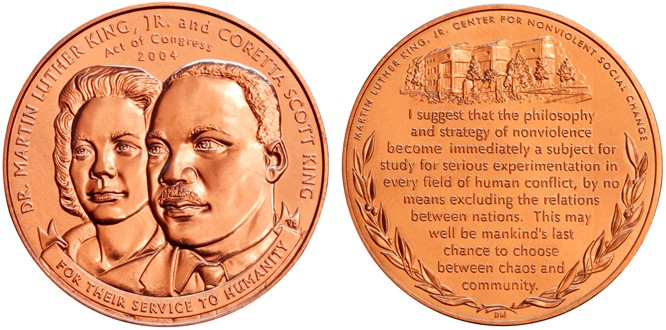
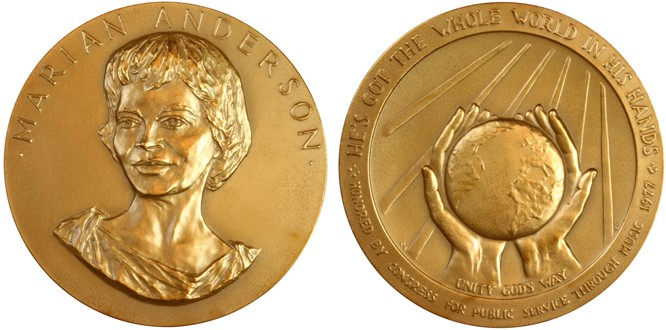
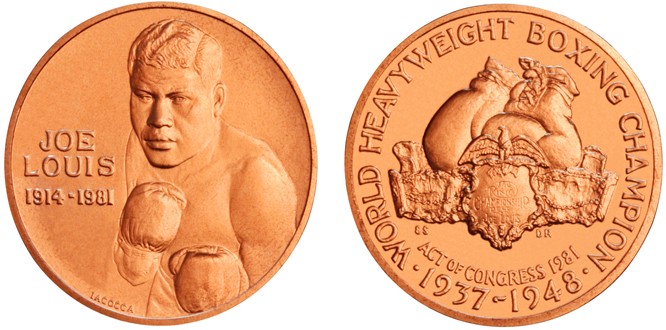
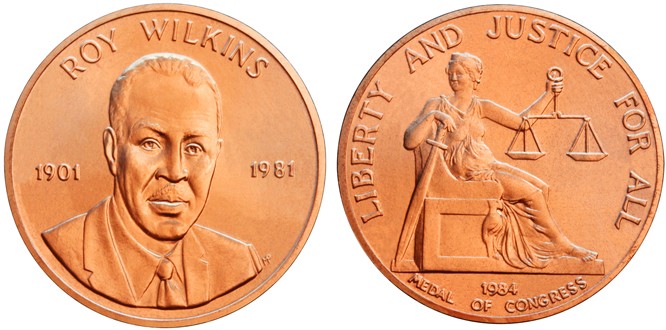
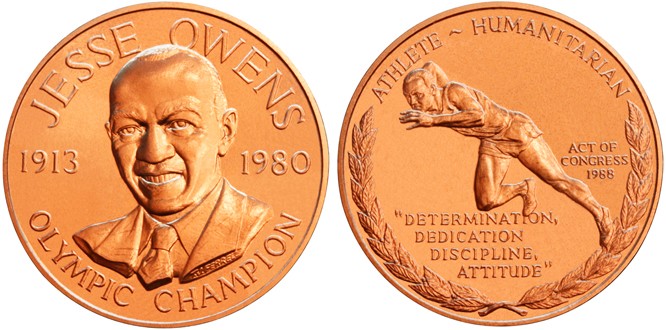


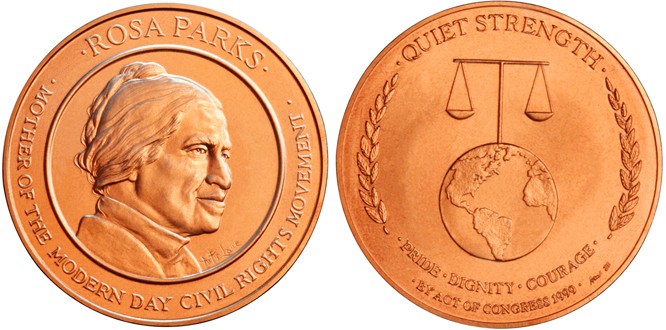
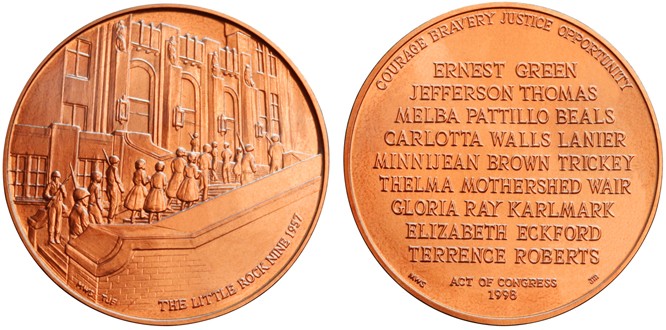


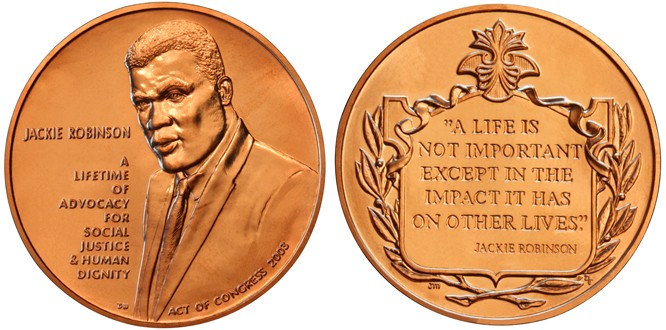
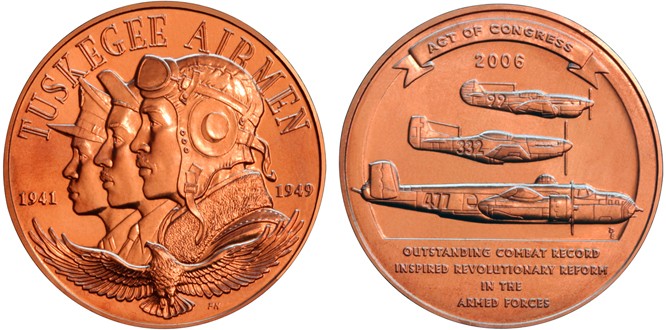
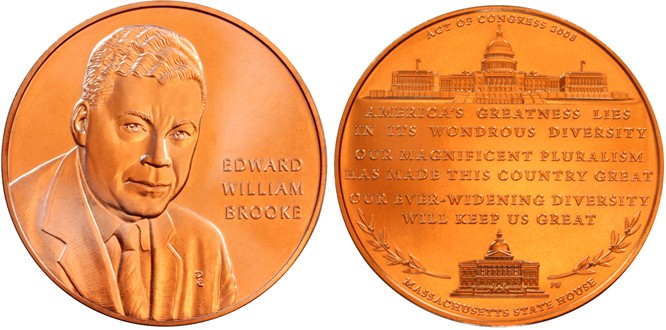
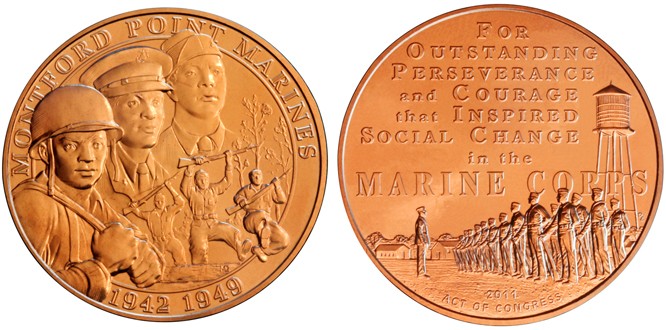
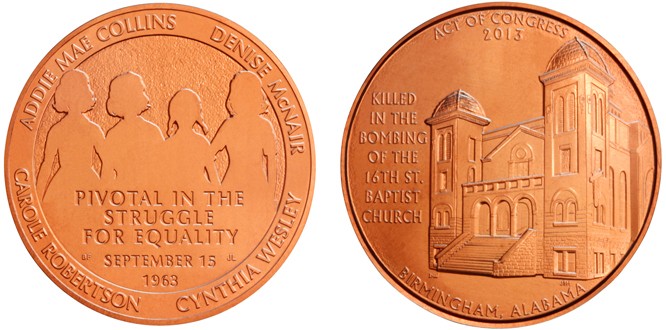

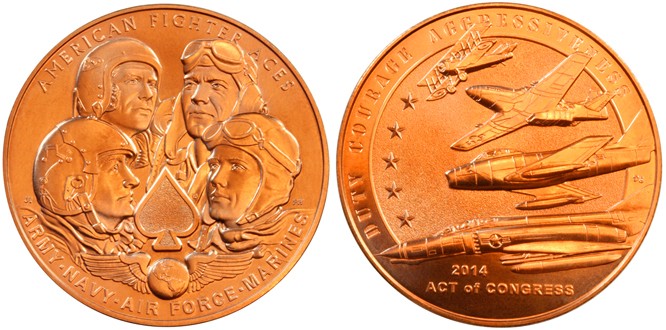
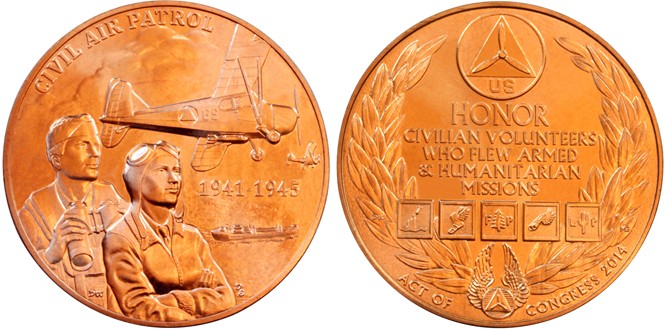
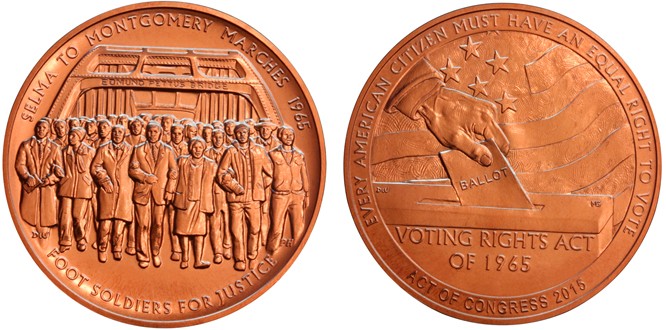
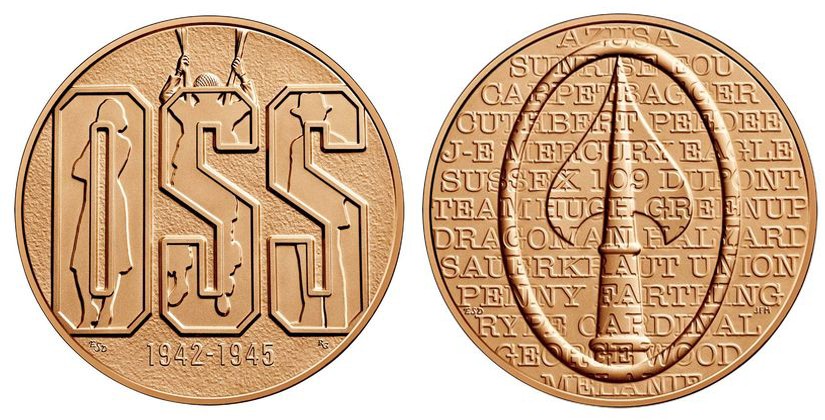
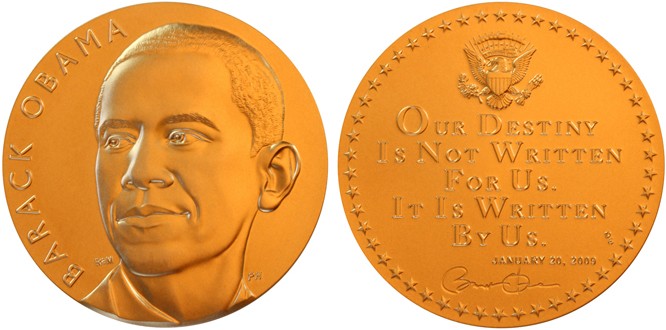

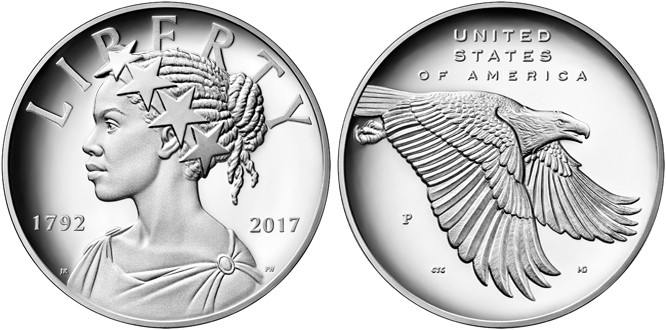






2 Comments
Someone, lease contact me at Tenaycious@aol to lt me know where I can purchase a bronze, Roy Wilkins medal created by the US Mint.
Thank You.
Shawn, – SWJ
How do I order the entire set of coins??? How much will it cost? Thank you for your response.
Rickey Bolden